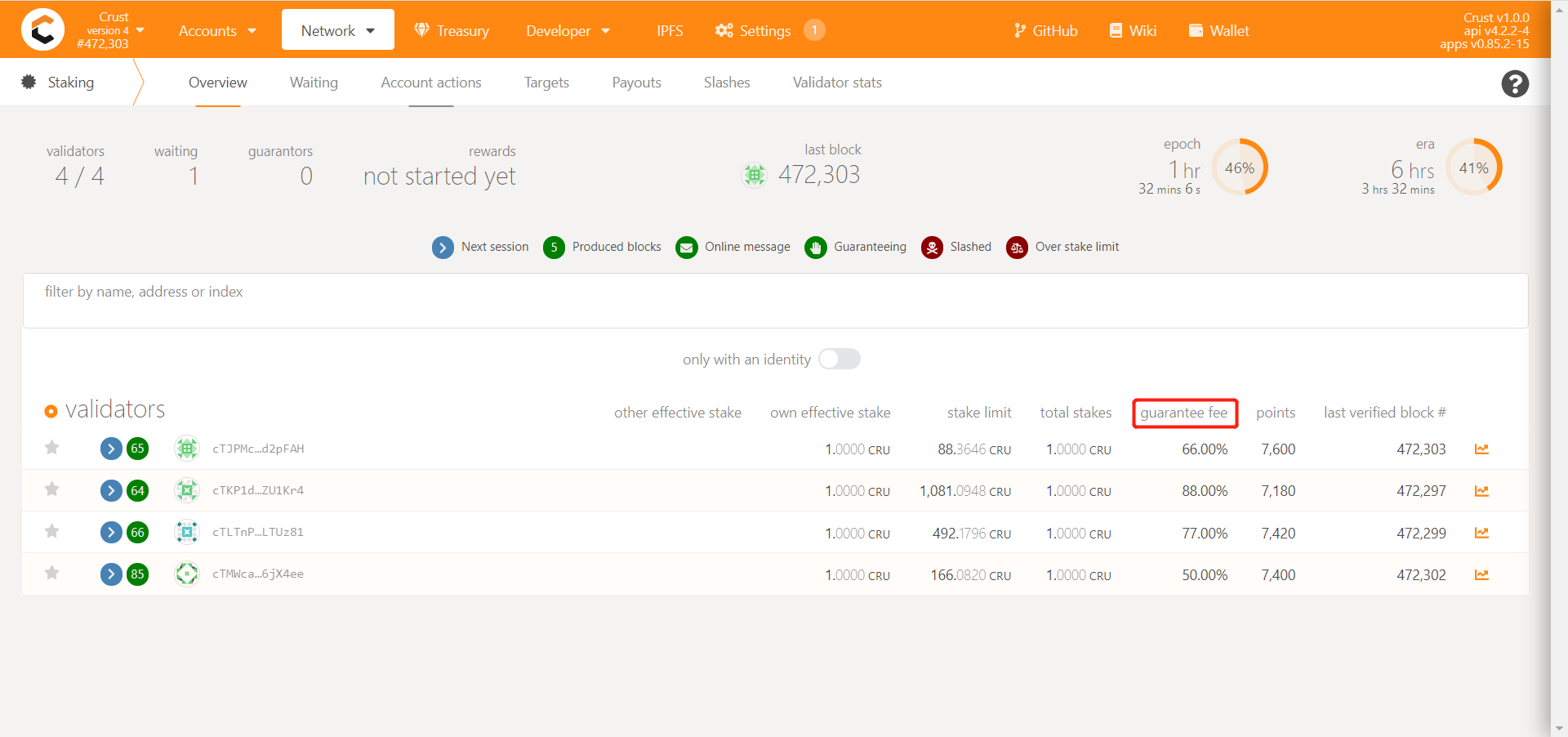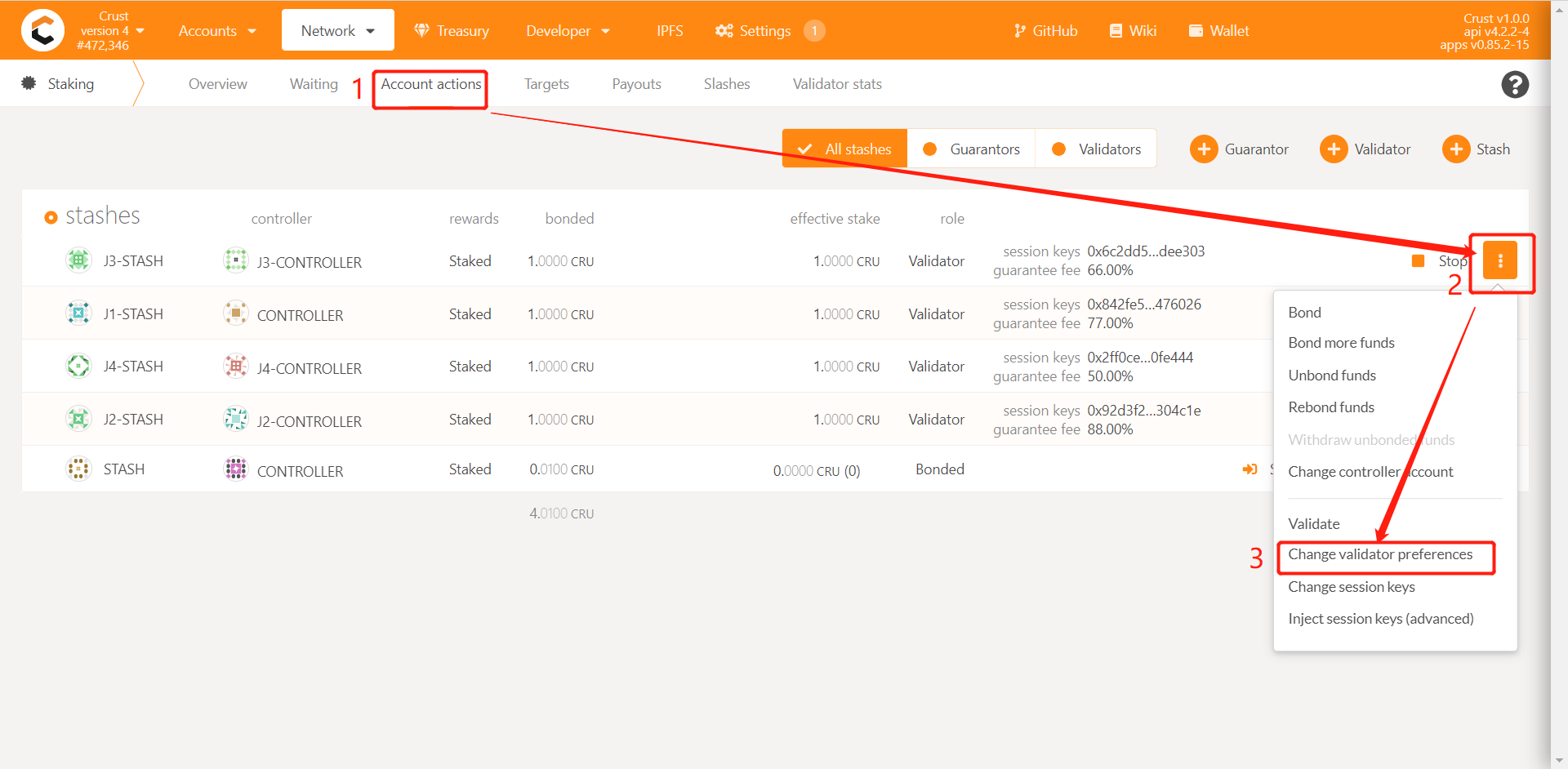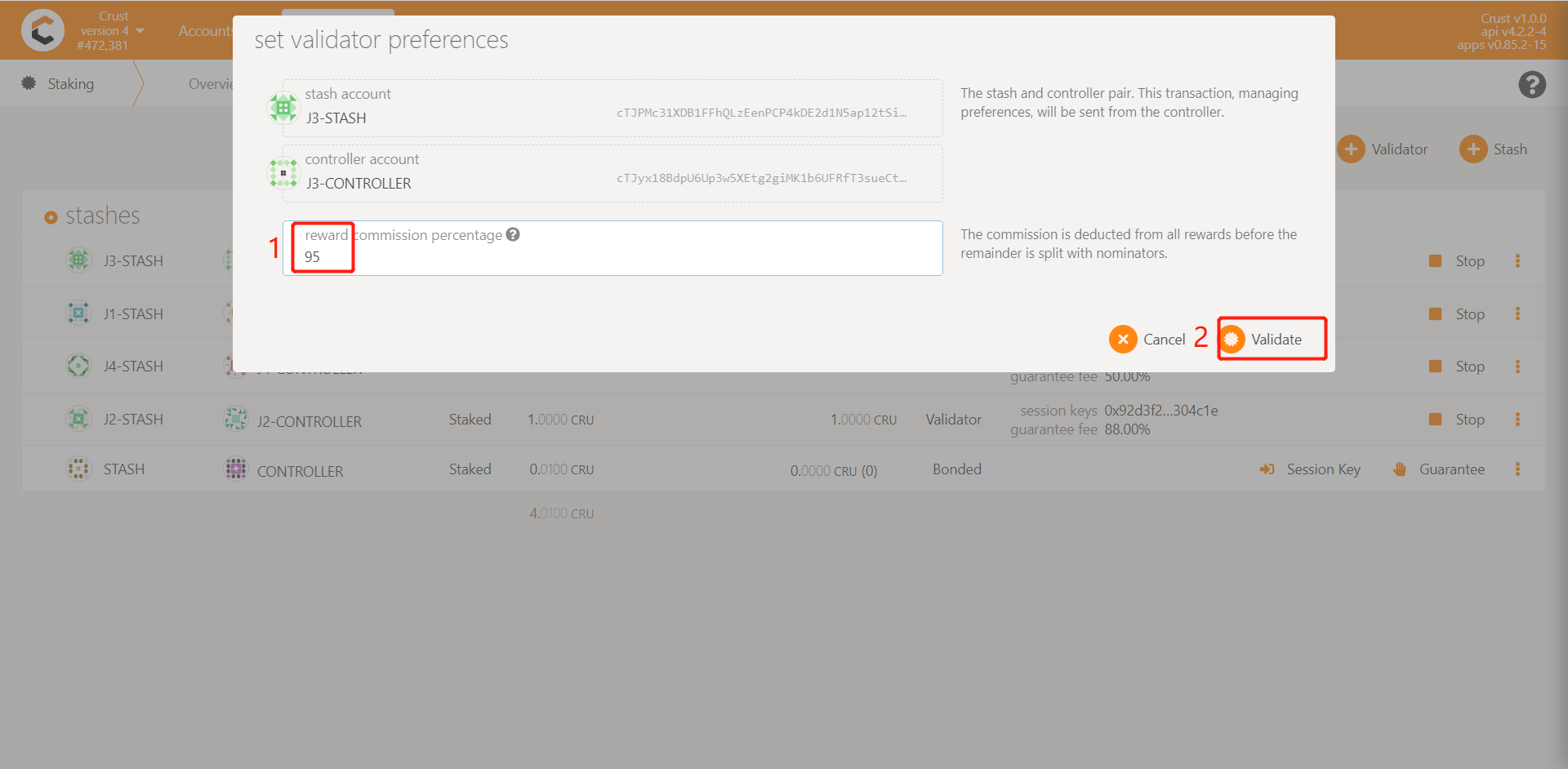Validator Guidance
The validator is the basic unit of the Crust Network. Refer to this document to become a validator of Crust Network.
0. Preparation
You need to ensure that you have enough CRUs for sending transactions. You can claim your CRU from Ethereum Claim to Crust.
1. Bond Accounts
Make sure you have completed Account Configuration, and have bonded your stash and controller accounts.
2. Setup Crust Nodes
Refer to Node Overview to setup your nodes.
3. Increase or Decrease the Amount of Self-staked Token
3.1. Increase the Amount of Self-staked Token
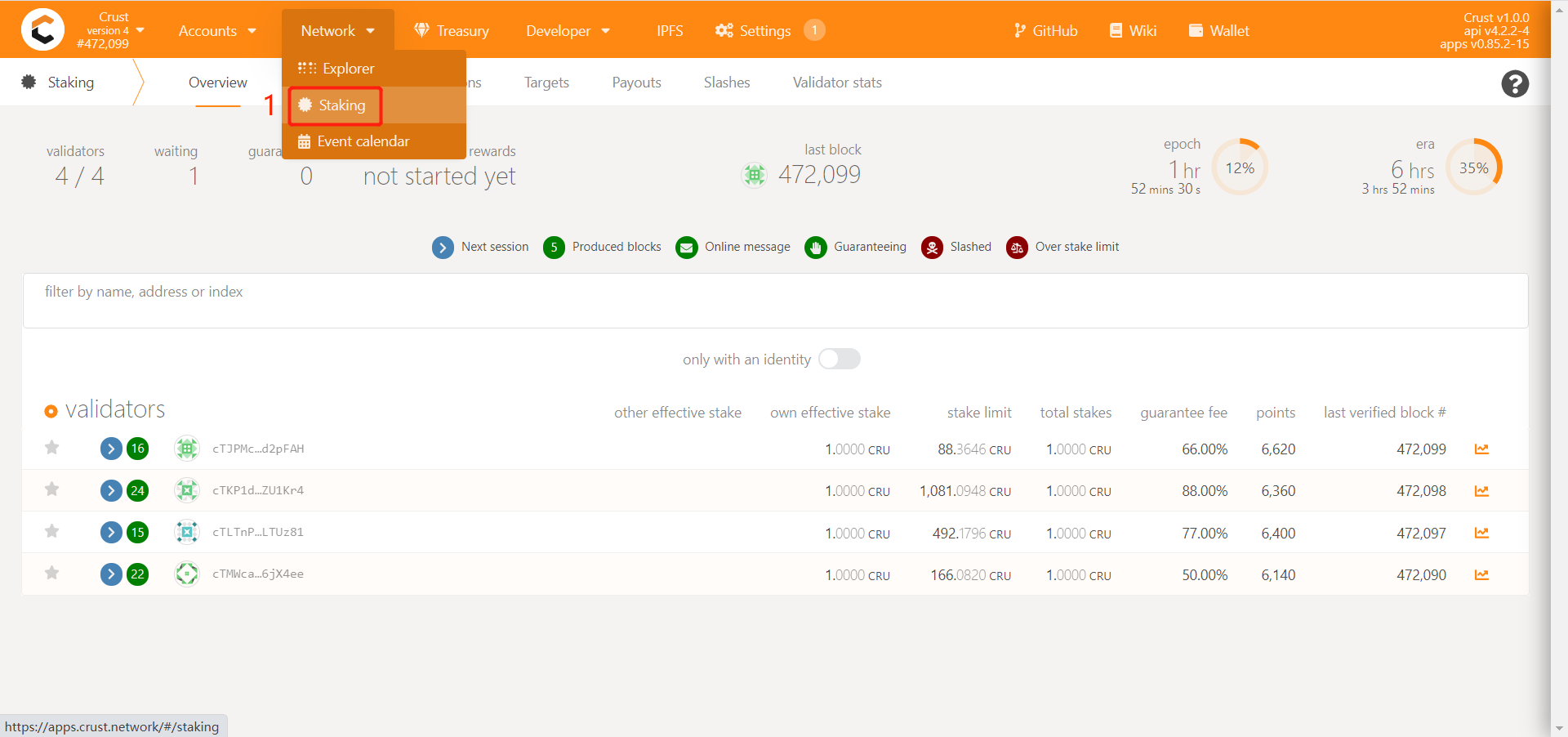
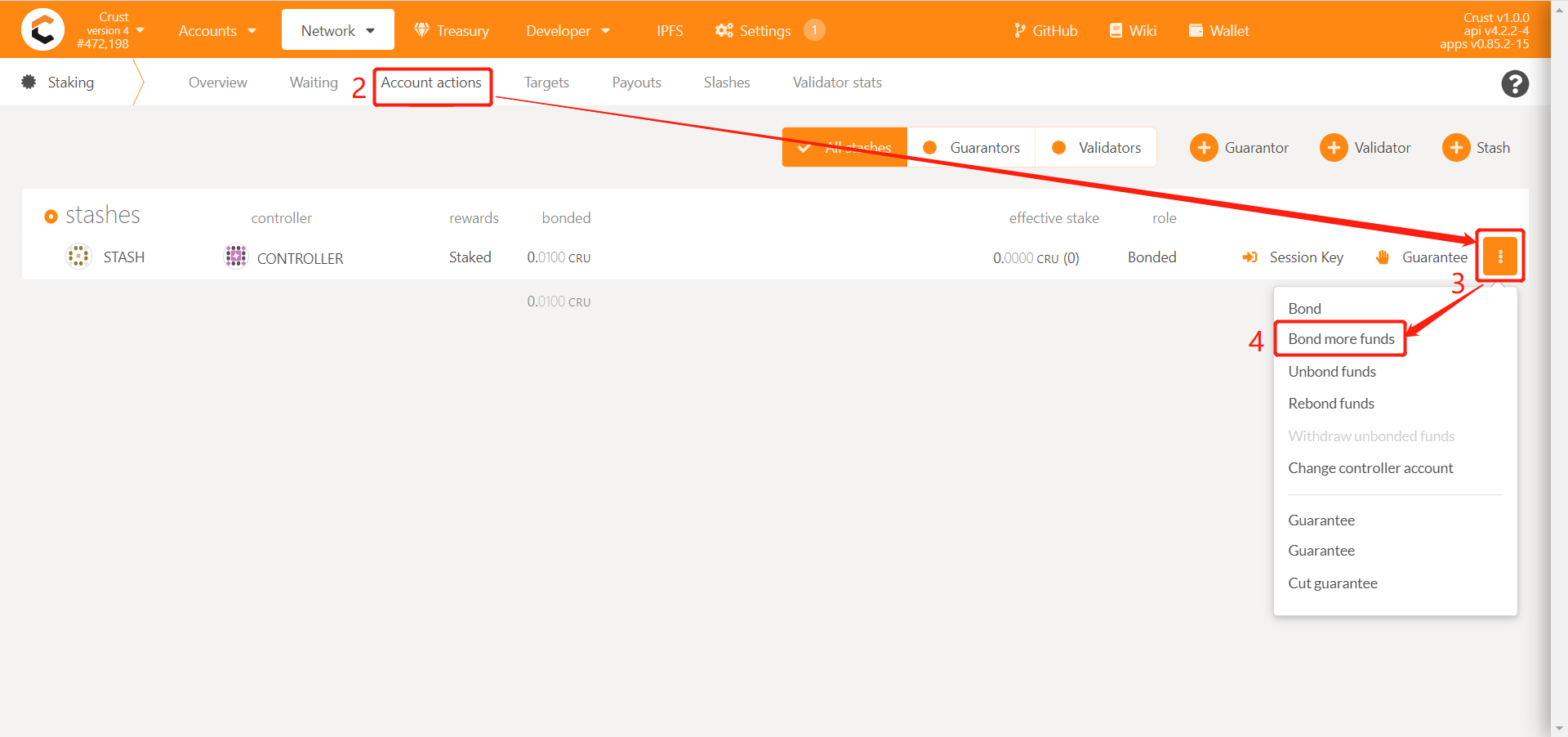
3.2. Decrease the Amount of Self-staked Token

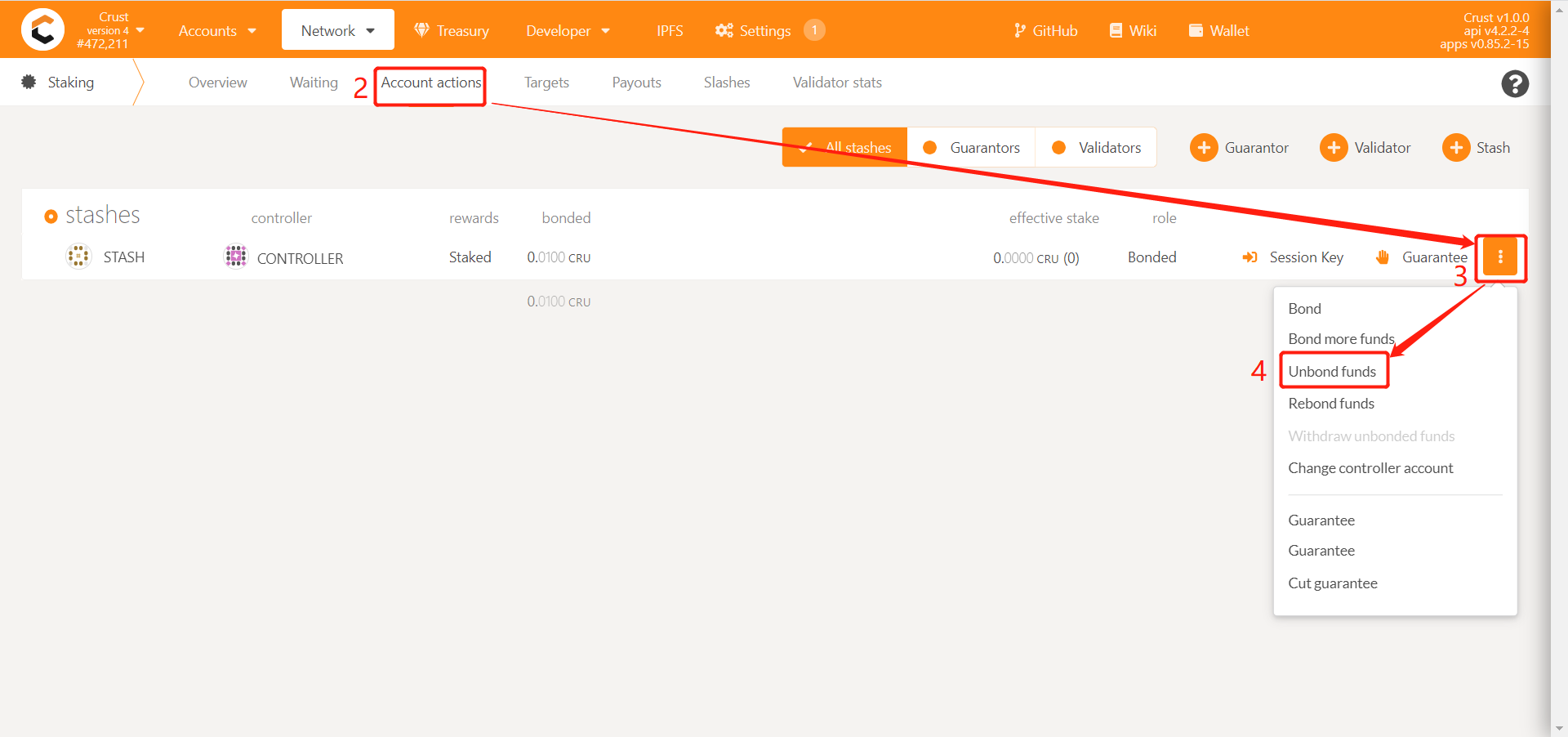
4. Set Guarantee Fee
The guarantee fee set by the validator refers to the percentage of total income (staking income + block generation income) which will be distributed to the guarantor.
For example, if the validator obtains 900 CRU staking rewards and 100 CRU authoring rewards (block generation reward) in one era, and if his self-staking accounts for 90% of his total staking(The remaining 10% is contributed by guarantors). If the guarantee fee is 30%, then the guarantors finally obtain (900 + 100) * 10% * 30% = 30 CRUs income, and the remaining 970 CRUs belong to the validator.
